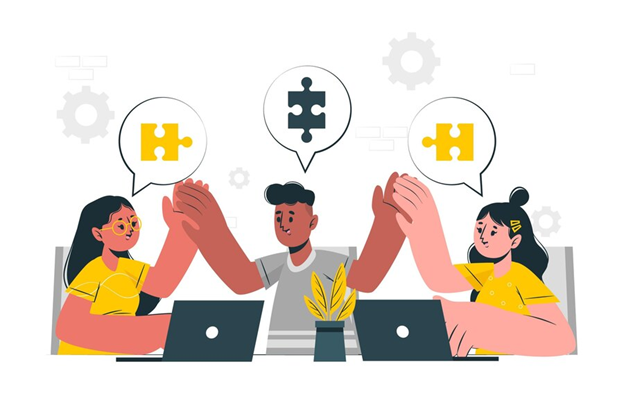
Image: Freepik.com
Behind Every Great Game: Key roles in game development
One of the key features of a successful venture is to assemble a team that can put ideas into action. During the COVID-19 pandemic, it became abundantly clear that effective teamwork is increasingly important now that remote working is growing.[1] Even though the hurdles of teamwork might have changed with time, the fundamentals stay the same: to ensure that collaboration within a team is effective, it is important to establish clear roles and responsibilities.[2]
This need for collaboration and mutual inspiration is no different in the gaming industry. Key roles need to be fulfilled to ensure the development process is optimised. This blog post will describe the most important roles.
Firstly, we have the producer. This person is vital in all development as they ensure the whole project is kept on track. As a project manager, you balance the workload and schedules among the teams, the project deadlines and handle the issues that arise throughout the process.
If we zoom in on the practical side of game development, we see roles like the game designer, the programmer and the UI designer and developer. The game designer is responsible for shaping the game mechanics and challenges. They envision and put down on paper what the game should look and feel like. They are supported in their efforts by the narrative designer, who makes sure the game mechanics and the flow of the game correspond to the message or story of the game. They are aided by the programmer who can code the magic that makes the game function. Not only do they develop the outlook of the game, but they also fix the bugs that pop up to ensure the game runs like clockwork. The UI designer looks at how the digital end product looks and how users interact with it. The look and feel of the game are improved by the designer, while the UI developer takes the end product and looks at its functionality, focusing on the code and interactivity.
Once the idea and general outlook of the game have been finalised, it is time to consider the creative aspects of the game. In order to focus on this, we need artists or animators. They are the visual creators who bring to life the environments and characters. Once everything has its own colour and style, players will likely be more excited to play the game. However, we shouldn’t forget to also involve the sound designer. To fully immerse yourself in a game, not only do the visuals need to be striking, but also the sounds. Every little raindrop needs to be heard, and the better the soundtrack, the greater the chance of the game’s success.
Last but not least, a successful development team will also need marketing and PR staff. One of the most important things in game development is to get the word out. Tons of games are continuously created, and you will need to find ways to distinguish yourself from the herd. Social media campaigns and press releases need to be involved to ensure your game sets itself apart.
In conclusion, game development depends on the collaboration of a well-rounded team, in which each member brings unique skills to the table. From project management to design and marketing, every role plays a vital part in turning an idea into an engaging game. By understanding and valuing these roles, aspiring game developers can build stronger teams and create better games.
References:
[1] Johnson, S.S. (2021). The Science of Teamwork. American Journal of Health Promotion, 35(5), 730–732. https://doi.org/10.1177/0890117121100795.
[2] Haas, Martine, and Mark Mortensen. “The Secrets of Great Teamwork.” Harvard Business Review, June 2016, https://hbr.org/2016/06/the-secrets-of-great-teamwork.
